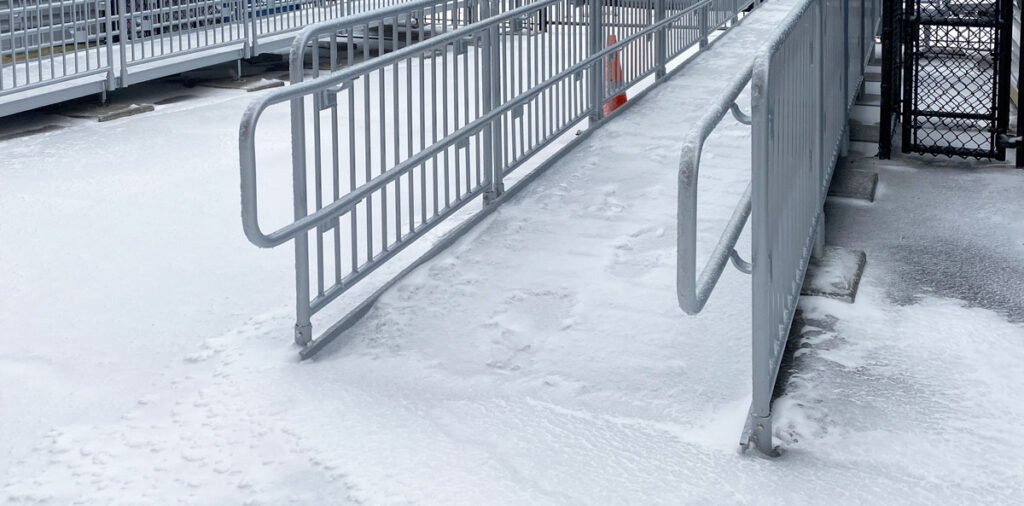As the first snowflakes of winter begin to fall, they bring with them the promise of days filled with sledding, snowmen, and hot chocolate. However, the winter season also marks the beginning of hazardous weather conditions that can interfere with the safe usage of outdoor wheelchair ramps. Snow, ice, and freezing temperatures can make navigating an accessibility ramp difficult and dangerous for you or your loved ones who require the ramp to safely get in and out of the home.
In this blog, we delve into the conditions that can make outdoor wheelchair ramps slippery or hazardous and provide you with some crucial tips for successfully preparing your ramp for the winter season.
How Durable is Your Wheelchair Ramp in Winter Conditions?
The materials your wheelchair ramp is constructed from will affect how well it endures the winter weather, with some materials being much more durable than others.
Wood Wheelchair Ramps
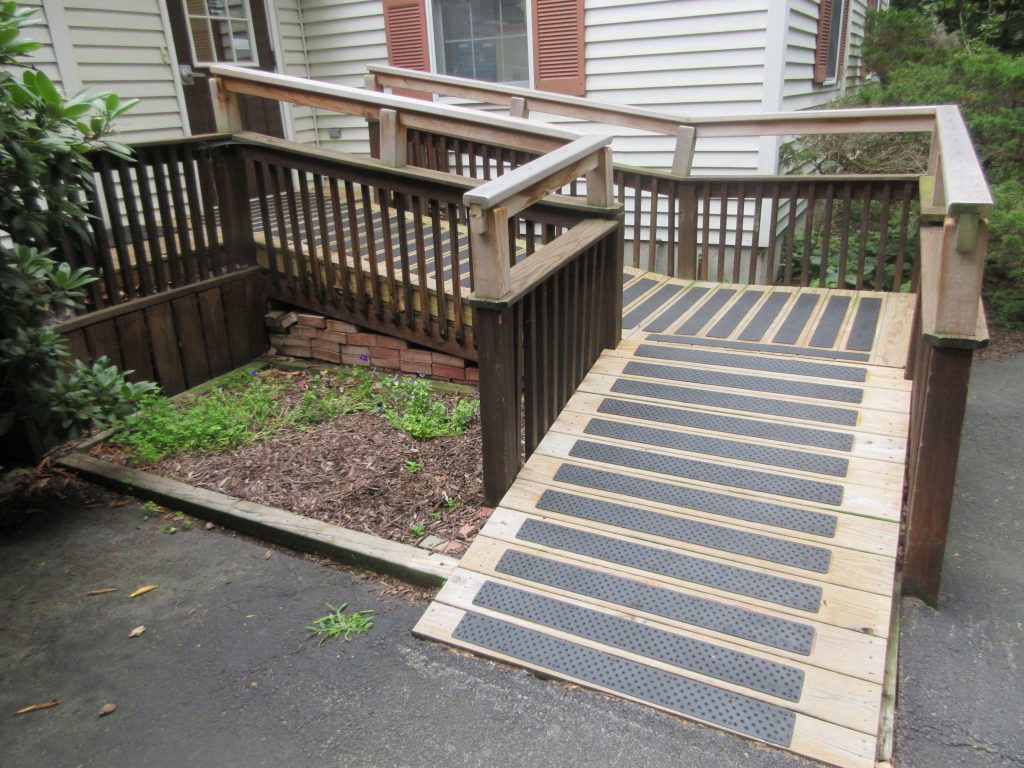
If not sealed properly, wood wheelchair ramps are very susceptible to moisture and can rot, warp, and splinter. With snow collecting and then melting, moisture can be present for most of the winter season on your wooden ramp. This not only decreases the lifespan of your ramp but also makes it more likely to cause slips and falls or interfere with the wheels of wheelchairs and scooters.
Even if your wood ramp is sealed, it’ll need to be re-sealed annually, and not even that is a complete guarantee that it’ll completely keep out moisture. If the wood ramp has begun to splinter or warp, it is difficult to stop the progression of the degradation process, and your wood wheelchair ramp will likely need to be replaced eventually.
Finally, wood ramps that are sealed tend to pool water on top making them slippery and downright dangerous when the temperatures dip below freezing.
Steel Wheelchair Ramps
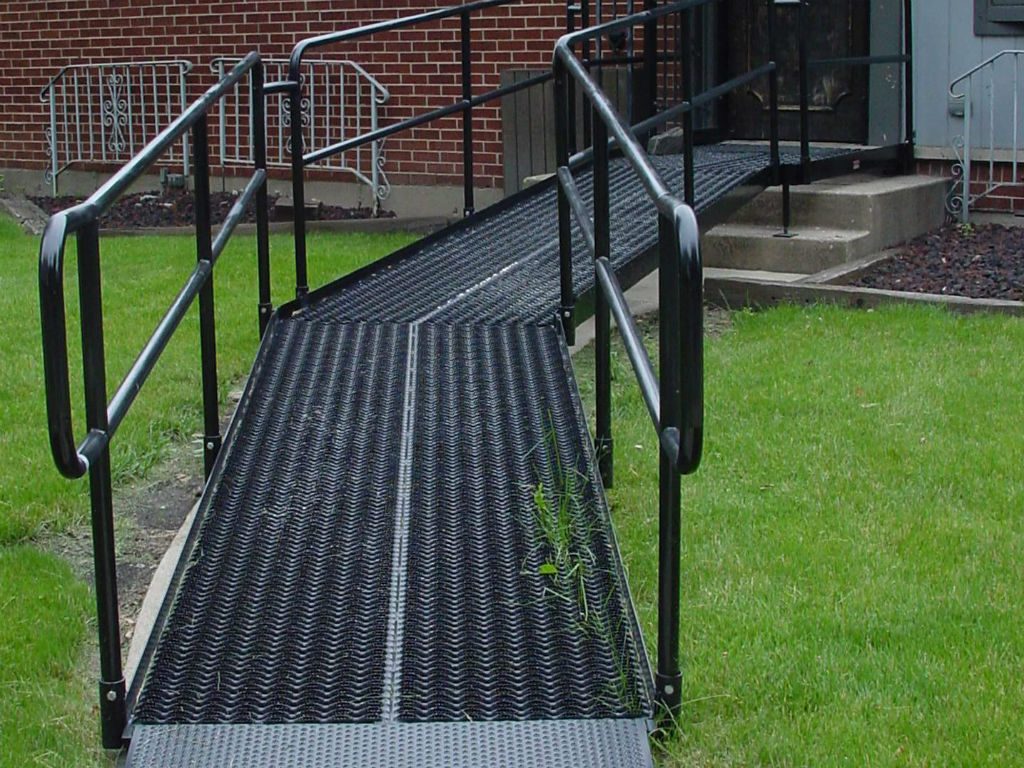
A step up from wood, steel wheelchair ramps are not nearly as susceptible to degradation as wood ramps are. They are, however, more susceptible to rust. That is why most steel wheelchair ramps are powder-coated to prevent rusting when exposed to moisture. Furthermore, it’s important to look out for any chips or damage to the powder coating and maintain it to avoid rusting.
Aluminum Wheelchair Ramps
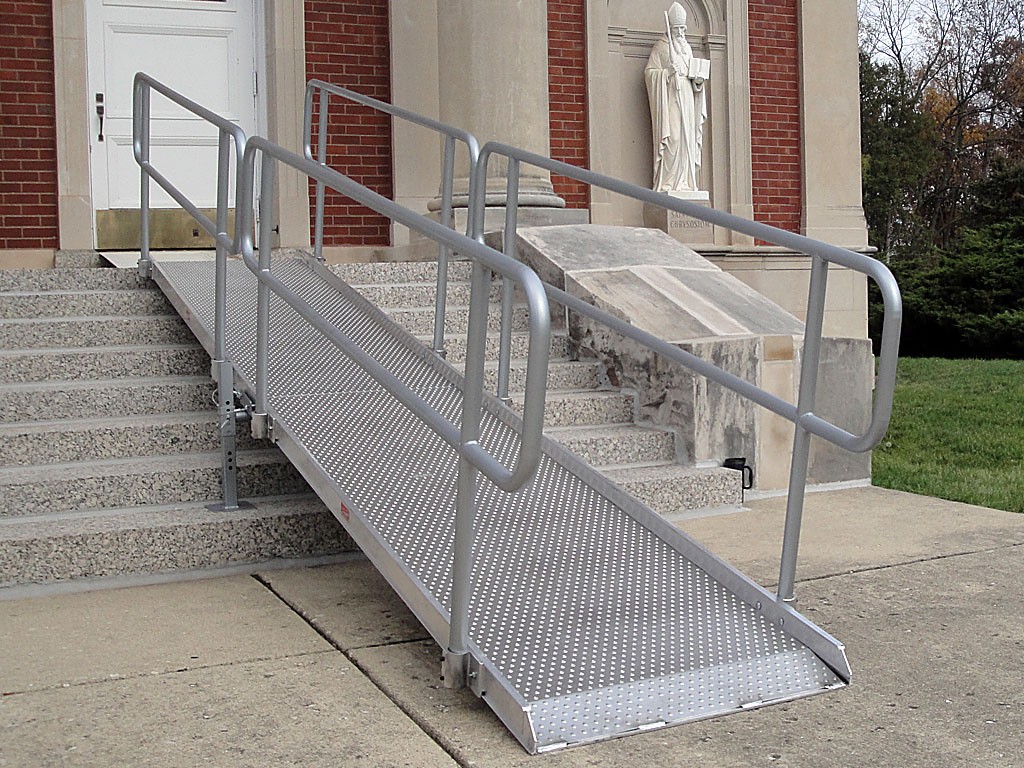
Thirdly, and perhaps the best option, are aluminum wheelchair ramps that will not splinter or warp like wood. Aluminum ramps are also resistant to rust, even without a powder coating. Aluminum wheelchair ramps are exceptionally durable and will not require any extensive maintenance.
4 Ways to Prepare Your Wheelchair Ramp for Winter
Winter can be a challenging season for individuals who rely on wheelchair ramps for daily mobility. The cold temperatures, snow, ice, and freezing conditions can create significant obstacles when trying to access your home or navigate outdoor spaces. However, with the right preparations, you can ensure that your wheelchair ramp remains safe and accessible throughout the winter months. In the following sections, we will explore four essential ways to prepare your wheelchair ramp for winter, allowing you to face the season with confidence and ease.
De-icing Agents
One of the first lines of defense when it comes to winter weather is the use of de-icing agents. A critical consideration, however, is ensuring that the de-icing agents you use on your wheelchair ramp are non-corrosive. Whether your ramp is constructed of wood, steel, or aluminum, rock salt, which contains sodium chloride as the main melting agent, can corrode or damage your ramp. Non-corrosive ice melts that contain magnesium chloride as the melting agent are safe to use on wood, steel, and aluminum wheelchair ramps.
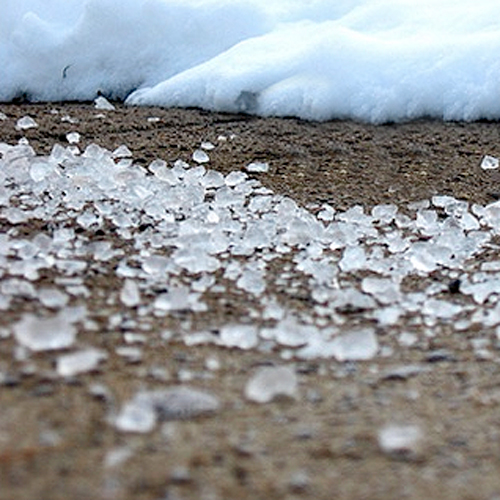
The de-icing agent should be applied to your ramp before a snowstorm or even a rainstorm as dropping temperatures can freeze the water into ice. This will help prevent thick ice from forming on the ramp in the event of a heavy winter storm.
Snow Removal
While snowfall varies by location, it’s also not uncommon for typically warm areas to receive snow or other areas to fight through multiple blizzards in one season. It’s important to anticipate needing to remove large accumulations of snow from your wheelchair ramp to preserve its usability.
For individuals aging in place, snow removal can be a more significant challenge. As mobility and physical capabilities may diminish with age, it’s crucial to have a well-thought-out plan in place for snow removal. In many cases, older loved ones may not be physically able to clear snow and ice from their wheelchair ramps or walkways. Having a reliable family member or professional snow removal service on-call can make all the difference in ensuring their safety and accessibility during the winter.
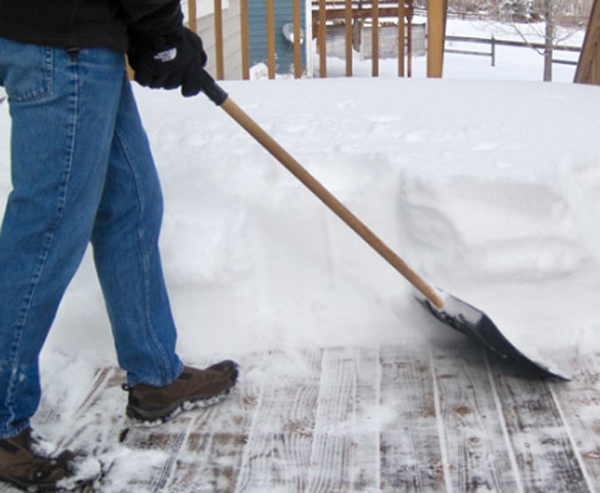
Non-Slip Solutions
In conjunction with snow removal and de-icing agents, non-slip solutions are key for preventing slips and falls on your ramp. Ice, snow, sleet, and moisture accumulation in general can make outdoor ramps dangerously slippery. Thankfully, most steel and aluminum ramps are constructed with a non-slip surface. HandiRamp’s modular wheelchair ramps, for example, feature a patented raised-button traction surface. The 360-degree raised buttons create traction going in any direction on the ramp, not just up and down.
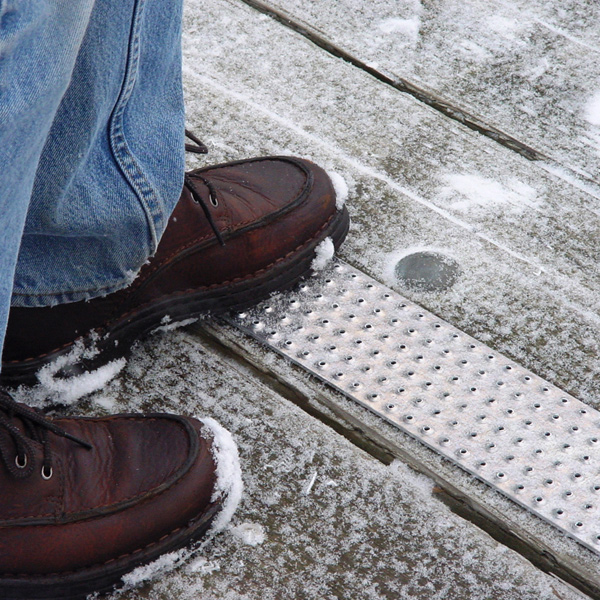
For ramps without a non-slip surface, like wood ramps, something must be applied to create traction, especially in the icy winter months. Adhesive grit treads and rubber mats are options you’ll find at almost any hardware or big box store, but they both have the same drawbacks: they don’t provide enough traction in snow or ice and can easily peel up, causing more slip and fall hazards. HandiTreads Deck/Ramp Treads, on the other hand, feature the same patented non-slip surface that HandiRamp has been using on their ramps for decades. Unlike adhesive treads, HandiTreads can be installed in any temperature or weather condition and are backed by a lifetime residential warranty.
Handrail Updates
The winter season is also the perfect time to ensure that the handrails on your wheelchair ramp are still in good condition. Check the handrails for stability as well as any rust or damage. If the handrails are bolted onto your ramp, ensure that all bolts are securely fastened.
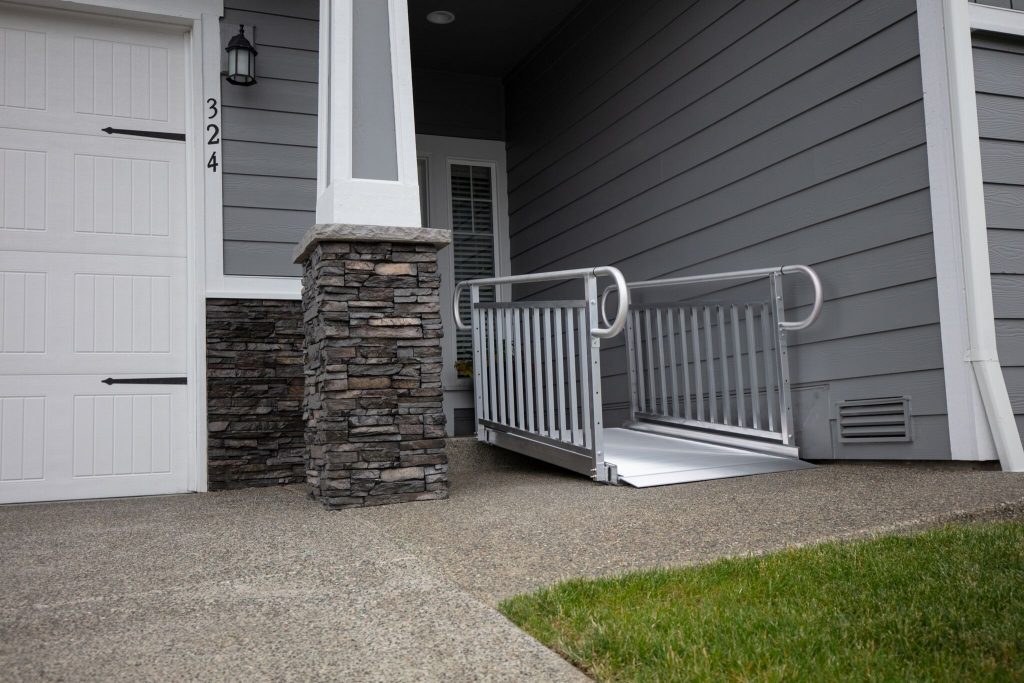
If you notice that your handrails have become wobbly or do not provide as much stability as they once did, then it’s a good idea to look at a replacement. It is essential that the handrails be exceptionally stable during the winter months to provide a reliable grip to steady oneself when walking on the ramp.
Year-Round Reliable Accessibility
Ultimately, preparing your wheelchair ramp for winter is crucial for ensuring the safety of yourself and your loved ones. There should be safe and reliable access to the home all year long. That is why HandiRamp aluminum wheelchair ramps are constructed to withstand all the weather and environmental conditions Mother Nature can conjure year-round. Give one of our ramp experts a call at 800-876-7267 to learn more about our custom aluminum wheelchair ramps, any time of year!


